Life Drawing, Celebrating the Human Form
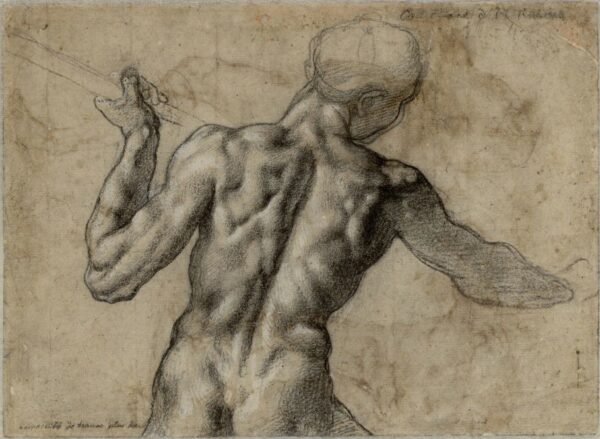
Anatomical study of the back by Michelangelo, 1475 – 1564
Drawing the human body from life has been a fundamental skill developed by artists throughout the centuries. To observe the human figure in this way is to reach into the body, to go beyond the skin, to the musculature, skeletal frames and layers beneath and within. Through such an approach, drawing from the human body has significantly advanced scientific understanding. In the 15th century the collective drawings by Leonardo da Vinci illustrated not only his sharp eye as an artist, but the practical, mechanical activity of the body, resulting in the artist becoming recognised as a pioneer in the understanding of human anatomy, transforming medical principles.
Early, simple depictions of the body found in cave paintings have seen endless transformations through artistic generations, from the classical period and beautiful studies of the ‘ideal form’, in studies by Michelangelo and Rembrandt, to the academic study of the body. A rigorous programme of studying from etchings, plaster casts, and finally from a life model has been a central source of inspiration for many art schools such as the Royal Academy of Art and the Académie des Beaux-Arts, and aspiring artists.
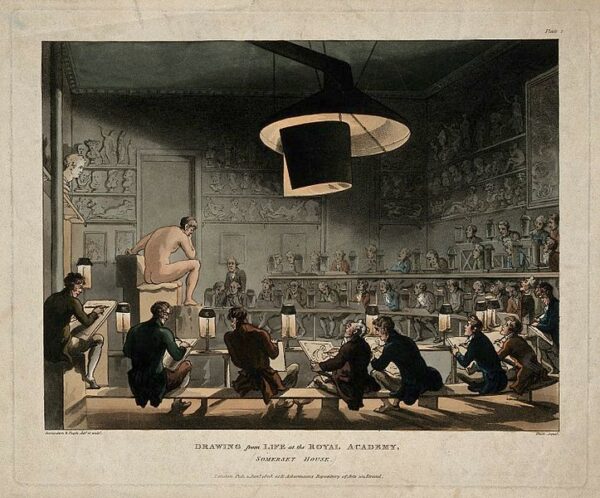
Study of a life drawing class at the Royal Academy, Somerset House, London.
Studying the figure has also opened transformative doors to modern and contemporary art, looking at how we see, use, and respect our bodies, and how we feel.
“Drawing is not what one sees but what one can make others see.” Edgar Degas
Whilst studies may focus on the whole figure or detailed studies of elements of the body, they are often combined with delicate gestures and expressions, such as can be found in Edgar Degas’ impressionist ballerina studies. In these works, Degas renders a tenderness in his work which we can all inherently relate to; a single moment of reflection, or doubt, a flutter of feelings before we take a step towards a performance or entering a room…
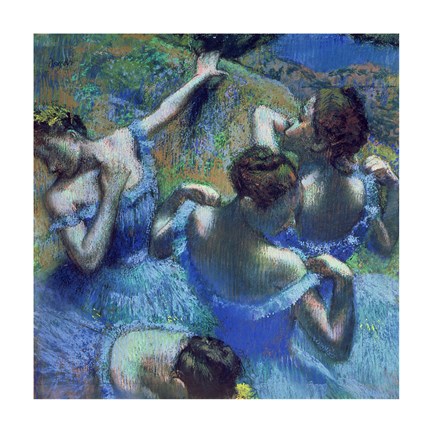
Edgar Degas, Blue Dancers, c.1899, oil on canvas
Perhaps the intrigue of studying the human form for modern and contemporary artists, however, is the ability to look beyond traditional anatomical beauty, and rather to expose and explore the relatable body: the individual.
Lucian Freud stated: “I paint people not because of what they are like, not exactly in spite of what they are like, but how they happen to be.”
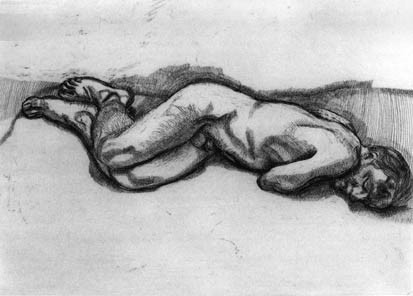
Lucian Freud, Naked Man on a Bed, 1987, etching
The beauty of studying the body is the offering made to the sitter, artist and viewer alike; by capturing a restful, introspective moment, life drawings can project a calm assurance of our places in the world. We are reassured of our own gravity, and we are reminded to allow ourselves time for thought, and for rest.
Whether it is an intricate and detailed study of the body, or a simple gesture to indicate space, movement, and a presence, what each life drawing can share in common is that each work acts as a document of our footprints and journeys, and the single moment.
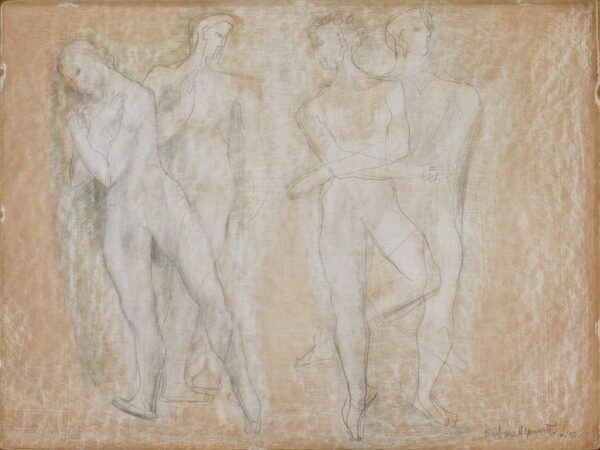
Barbara Hepworth, Ballet (2): Giselle, 1950, Oil and pencil on board.
“I merely draw what I see. I draw what I feel in my body.” Barbara Hepworth
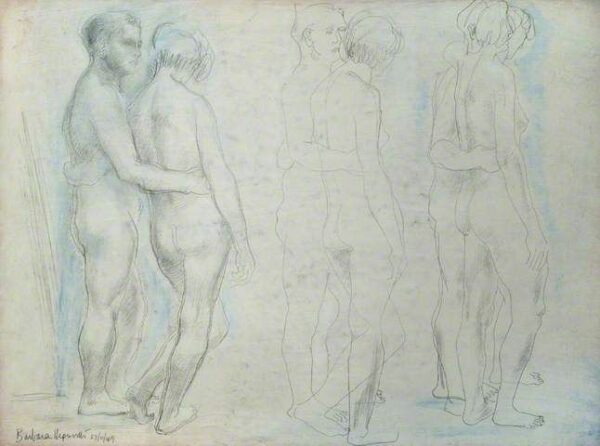
Barbara Hepworth, life drawing studies with blue accent